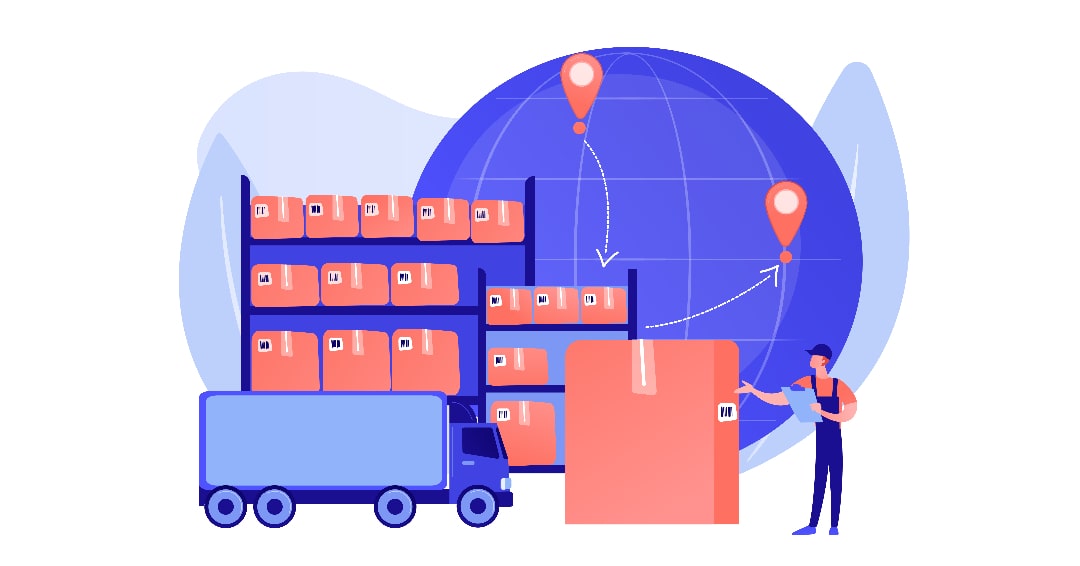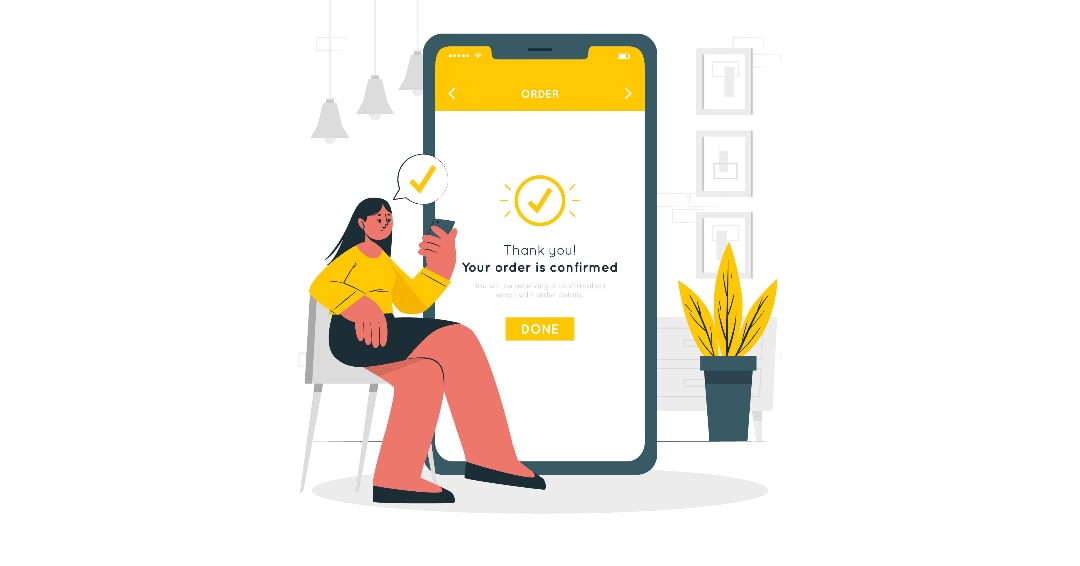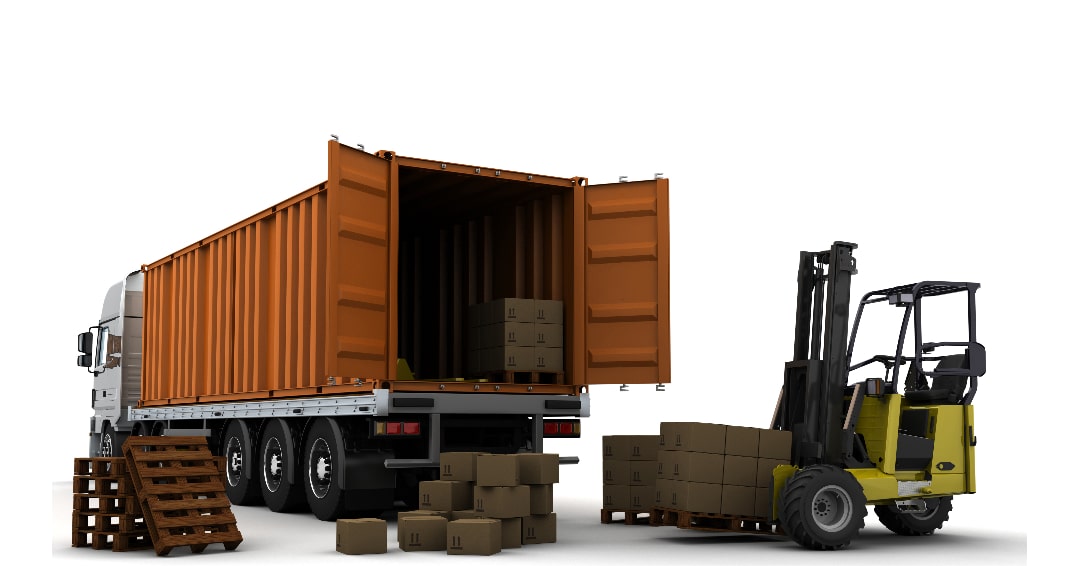How the Shipping Process Works In eCommerce
Several steps occur before shipping an order, and these steps are essential to facilitating the shipping procedure, from accepting the order to preparing the order to be shipped. There are also several additional choices on how to prepare and ship orders, and it will be up to you, the business owner, to resolve how to set up your shipping procedure.
Although each step of the eCommerce supply chain matters, shipping is one of the essential steps to obtain right as it can instantly influence a consumer’s knowledge of your brand.
In this blog, you will understand the preliminary stages of the shipping procedure, who is concerned, and the additional shipping choices for your online store.
So, what do you want to understand?
- What is the Shipping Procedure?
- 3 Stages of the Shipping Procedure
- Who’s Involved?
- Improving Your Shipping Procedure
- Shipping Methods and Your eCommerce Platforms
What is the shipping procedure?

In eCommerce, the shipping method implicates everything from receiving a consumer order to preparing it for last-mile delivery. In addition, shipping an order involves several factors, such as order management, warehousing, and carrier connections.
At a high level, the shipping procedure can be broken down into three preliminary stages:
- Receiving the order
- Processing the order
- Fulfilling the order
The three stages of the shipping procedure
The three stages of the shipping method consist of receiving, processing, and fulfilling an order. These phases affect how fast and accurately you can prepare a consumer order and have it shipped instantly to its end destination. Here is a deeper dip into the various stages of the shipping procedure.
Stage 1: Receiving the order

Once you receive an order, you will be required to ensure you have sufficient inventory in stock to process the order.
It starts by working closely with your manufacturer or supplier to buy and obtain inventory at a warehouse or sending the stock to a completion center if you partner with a third-party logistics (3PL) enterprise.
Receiving consumer orders can be efficiently simplified by executing an order management system or inventory management software to sync your eCommerce platform. In addition, it can aid you in tracking inventory and orders all in one place.
Stage 2: Processing the order
Processing a consumer order directs to the method of verifying order data and completing sure it’s correct (e.g., verifying the shipping address) and that the items requested are in stock. Much of this procedure is often done utilizing automation and technology, which can speed up the order processing stage. The order status is revised in real-time, and consumers can be informed that the order is being processed.
Stage 3: Fulfilling the order
Once the order has been processed, the order fulfillment stage can initiate. This interests choosing the right items for the order and preparing them to be shipped.
There are several additional ordering options for eCommerce businesses, such as self-fulfilling orders or dropshipping. Still, eCommerce enterprises’ favorite choice is to outsource fulfillment to a 3PL or third-party logistics partner.

A 3PL will take care of the whole eCommerce fulfillment strategy, including warehousing, rendering picking lists, packing boxes, shipping orders, etc.
Since there are numerous hidden costs to self-fulfillment and dropshipping arrives with a list of challenges, partnering with a 3PL can assist save on time, automating shipping, and keeping logistics costs down.
Who’s involved in the shipping process?
For shipping orders to customers, the shipping method is relatively easy. It involves the shipper (in most circumstances, the brand) who processes and prepares the order to ship and the carrier who carries care of the last-mile delivery procedure. Sometimes, a 3PL is applied, acting as a middleman between the eCommerce enterprise and the page (s).
The shipper

The shipper is the enterprise or someone who processes the order and conditions it for shipping. It could either be the brand itself or a third party that provides fulfillment and shipping for the enterprise.
The carrier
Once the order is shipped, it’s up to the carrier to bring it safely delivered to the consumer. Significant shipping contains UPS, FedEx, USPS, and DHL. Once orders are in the carrier’s hands, you can still utilize order tracking to share updates with your consumers to be informed of calculated delivery dates on their orders.
The warehouses

The warehouse shipping procedure first and foremost implicates physical warehouses or fulfillment bases that store inventory until it requires to be sent to the following point — whether that’s straightforward to the end customer, to another allocation point or hub, or even a retail store.
These warehouses can be worked by an eCommerce brand, a merchant, a 3PL, or other parties. The warehouse shipping procedure entails obtaining inventory, keeping it, gathering and packing orders as they are determined, and then having carriers pick up packages from the facility to finalize the warehouse shipping procedure.
3PLs
A 3PL delivers inbound and outbound logistics benefits. When an eCommerce business partners with a 3PL, the 3PL company handles shipping orders instantly from the fulfillment center where eCommerce inventory is kept.
3PLs also have intimate relationships with shipping carriers and can bargain rates, enabling retailers to decrease shipping costs and offer a mixture of shipping alternatives for their consumers.
Once the order ships, vendors can view and handle all orders from one dashboard and maintain consumers in the loop on their orders.
Improving Your Shipping Procedure
However, as a rule of thumb, making a procedure that permits you to offer consumers additional shipping strategies and incentives (e.g., 1-day shipping via ground, free shipping, and expedited shipping) can help to improve your average order value, build brand loyalty, and enhance your cart abandonment cost.
To accomplish this, you will require to discover ways to automate additional parts of the fulfillment and shipping procedure or delegate eCommerce logistics to a 3PL.
No matter what you trade, preparing and shipping orders are time-consuming. However, what drives it even more demanding is the capability to meet consumer anticipations by shipping orders out fast, accurately, and at an inexpensive cost.
The good news is that there are many ways to enhance your shipping procedure, and it comes down to what works satisfactorily for your company. The suitable eCommerce shipping method will rely on your audience, budget, margins, product(s), and other factors.
Shipping methods and your eCommerce platforms
Making a shipping method demands the proper technology, beginning with your eCommerce platform. Many platforms are designed to produce it straightforwardly to combine a shipping solution with your online store. Here is an overview of additional shipping choices and tools obtainable through leading eCommerce platforms.
Wix shipping
Wix is evolving more prevalent amongst eCommerce brands, which presents the capability to set up additional shipping choices for your store. In addition, Wix has integrations with shipping apps, including Shippo and ShipStation. ShipBob also has immediate integration with Wix and is a significant choice for outsourced supply chain management, even if your online store is always negligible.
By syncing your Wix store with ShipBob, you can simplify the retail fulfillment procedure by automatically sending orders put on your Wix store to one or more of ShipBob’s fulfillment center locations of your selection. From there, ShipBob picks, packs, and ships orders for you.
Shopify shipping

If your online store is on Shopify, you will have access to the eCommerce platform’s coverage of shipping choices — from bulk order management to label generation.
As your monthly order volume boosts, Shopify offers shipping apps and integrations to enhance your shipping procedure, such as Shippo, Order Printer, and ShipStation. Or, you can choose to outsource fulfillment by combining apps in Shopify to automatically execute orders as consumers place them and automate the shipping procedure.
BigCommerce shipping
BigCommerce is one of the largest and most customizable eCommerce platforms. With BigCommerce, you will discover many additional possibilities for handling shipping logistics. For example, BigCommerce authorizes you to self-ship or outsource shipping to a 3PL like ShipBob. Also, the BigCommerce Apps Marketplace has various possibilities that support printing of shipping and return labels, dropshipping, inventory management, and more.
Conclusion
Shipping technology integrates with leading ecommerce platforms and marketplaces to automate shipping for ecommerce brands. With a network of fulfillment centers across the globe, We offers merchants the ability to split inventory across locations to reduce shipping costs and time in transit.
Do you have any questions about subscription-based ecommerce? Let us know in the comments below!
Born Techies –Digital Commerce agency offers Shopify, Shopware, Magento, and Bigcommerce development with the latest technologies.
Do you want to receive a free consultation about how to optimize your store and generate more sales? Reach us out at [email protected] or contact us, and we will be more than happy to help you out.

